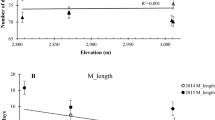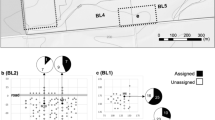Abstract.
The correlation between 99 clone female and male fertilities in a first generation seed orchard of Pinus densiflora was studied over 6 years. The effective number of the parent (N p) and the variance effective population number [N e (v)] were used to assess the impact of total (ΨT), female (ψf) and male (ψm) fertility variation. A theoretical framework was developed to account for female and male fertility correlations as well as the impact of possible pollen contamination. Total fertility variation was described by the sibling coefficient (ΨT: the probability that two genes randomly chosen from the gamete gene pool originate from the same parent), which was further subdivided into ψf and ψm. These parameters were compared under various conditions including the total seed harvest, imposing on equal seed harvest among the orchard's clones and two contamination scenarios (M = 0 and 20%). Fertility variations among females, males and clones were observed within and among years. Sibling coefficients (ΨT) were lower, but the effective number of parent (N p) and variance effective population number (N e (v)) were higher in years with moderate female and good male strobilus production. N p for female and male reproductive outputs varied from 49 to 82 and from 57 to 93, respectively. N p was higher for males than females. When the crop of the 6 years was pooled, N p for female, male and the clone were 73, 87 and 85, respectively. The impact of female-male fertility correlation for conditions with no-, positive- and negative-correlations were assessed and their impact on ΨT, N p and N e (v) was also evaluated. It was demonstrated that the practice of equal seed harvesting from every clone, or the mixing of seeds from several years, would substantially improve the genetic diversity and the genetic representation of the seed orchard population when a positive correlation between gender fertilities was observed. The relevance of these results to supplemental-mass-pollination was discussed under two cases where equal- and un-equal amounts of pollen from clones were included in the pollen mixes.
Similar content being viewed by others
Author information
Authors and Affiliations
Additional information
Electronic Publication
Rights and permissions
About this article
Cite this article
Kang, .KS., El-Kassaby, .Y. Considerations of correlated fertility between genders on genetic diversity: the Pinus densiflora seed orchard as a model. Theor Appl Genet 105, 1183–1189 (2002). https://doi.org/10.1007/s00122-002-1064-4
Received:
Accepted:
Issue Date:
DOI: https://doi.org/10.1007/s00122-002-1064-4




